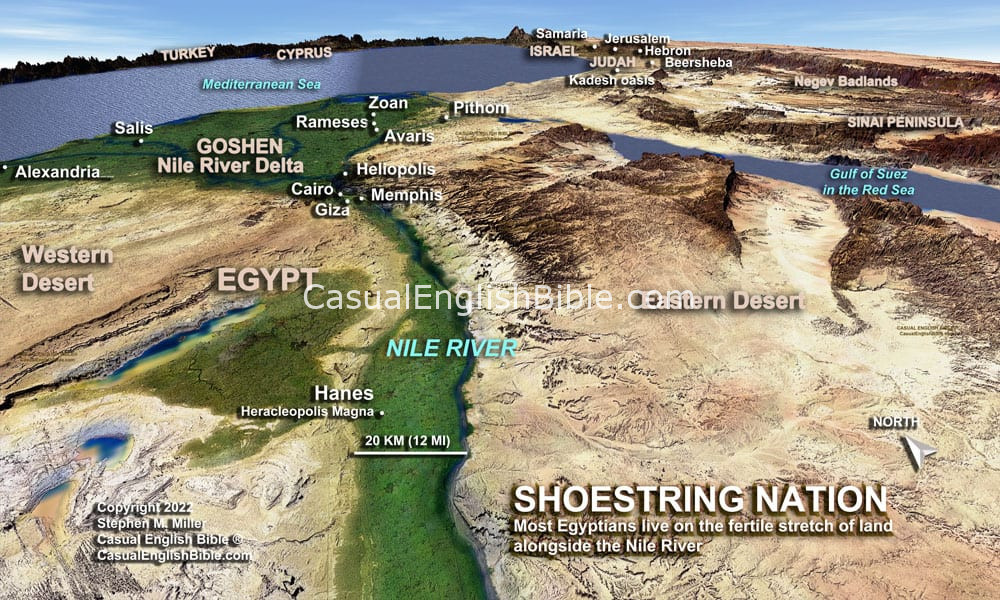
Bible map of Nile River Delta
Nile River Delta
The Nile River delta, a vast expanse of fertile land, holds a remarkable place in history, dating back to ancient times, including the era reported in the Bible. This fertile region is where the Nile, the longest river in the world, fans out into a network of channels before emptying northward into the Mediterranean Sea.
Land of Goshen and Hebrews
In Bible times, the Nile Delta was often referred to as the "land of Goshen," a region of great significance in the Old Testament. It was here that the Israelites found refuge during their sojourn in Egypt, guided by Joseph, who had risen to prominence in Pharaoh's court. The delta's lush fields and abundant water supply provided sustenance and shelter for the Israelites, allowing them to prosper and multiply.
The delta's rich soil, deposited by the annual flooding of the Nile, made it a prized agricultural region. Egyptians skillfully cultivated a variety of crops, including wheat, barley, flax, and papyrus. The delta's bounty sustained a thriving civilization that left behind monumental achievements like the pyramids and temples.
Water highway
Beyond its biblical significance, the Nile Delta was a bustling hub of activity. Boats laden with goods navigated the intricate network of waterways, connecting the delta's inhabitants with distant lands. The delta's strategic location at the crossroads of Africa, Asia, and Europe contributed to its economic and cultural vitality.
Over millennia, the Nile Delta has witnessed the ebb and flow of empires and civilizations. Yet its enduring fertility and vital role in sustaining human life have remained constants. Today, the delta continues to be a vital agricultural region. And it supports a large population, and contributing to Egypt's economic prosperity.
Written by AI
Edited by Miller

